Google IO liveblog: the 2017 keynote updates in real-time
Google's liveblog starts right now, and Android O is in tow
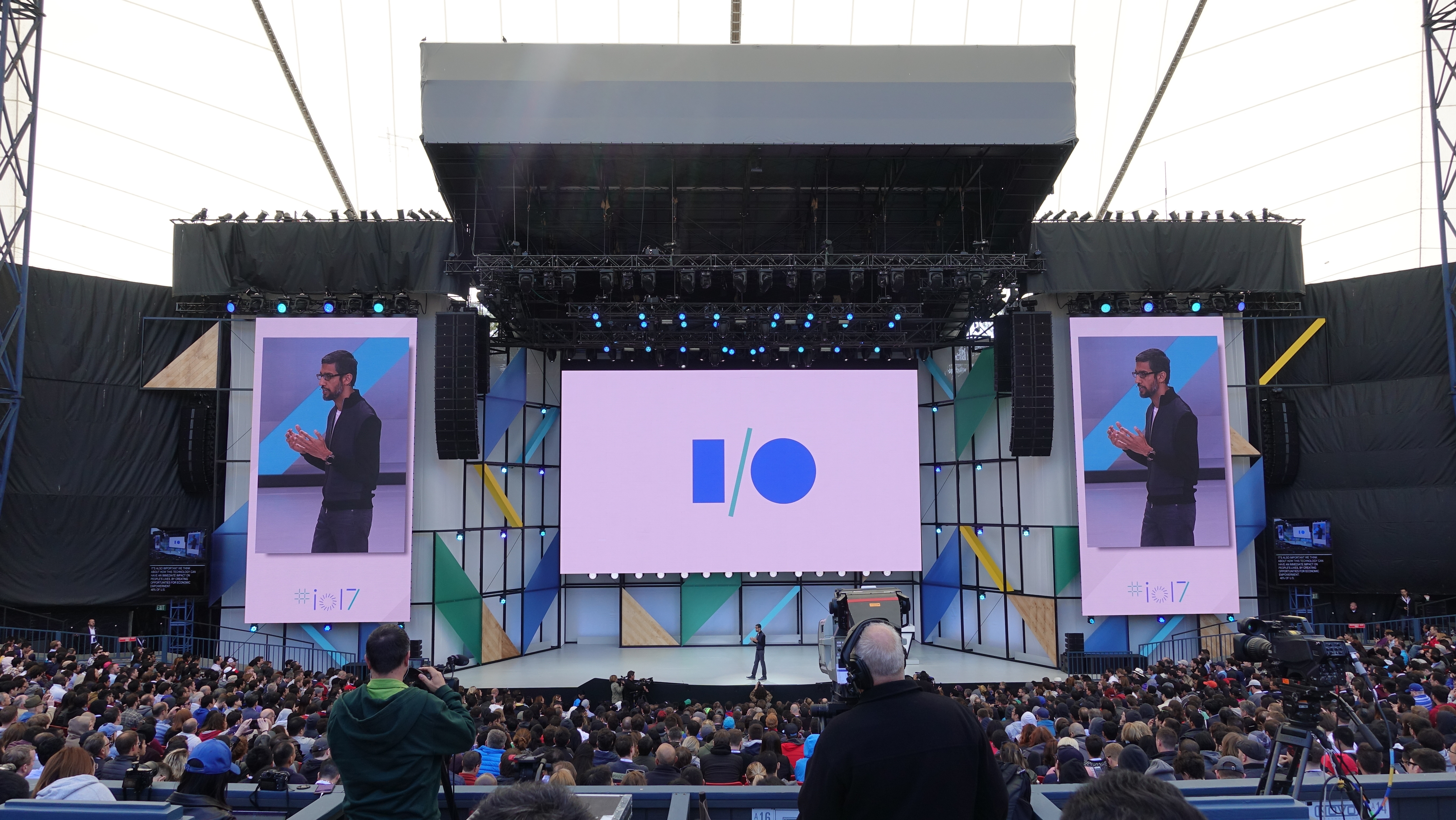
12:00PM: The Google IO keynote has officially ended. But our coverage goes on in the all-encompassing Google IO news hub. The major theme? Google is transitioning from a mobile first company to an AI first company. No, mobile isn't dead, but it's becoming less of a focus with every company investing in artificial intelligence.
Google wants its Google Assistant to lead the way, and with new Google Photos, Google Home and exciting DayDream VR announcements, but made some significant progress today.
Now... we're off to check out the demo stations at Google IO. We didn't see a lot of hardware like the Google Pixel 2, but we did see a lot of the software that will come to that phone with the debut of the Android O beta and new features.
Thanks for joining us for this minute-by-minute liveblog. Android out!
11:58AM: Google has one more trick up its sleeve for the Google IO keynote. It's using machine learning to help you find a job. This could be a big blow to other career-finding sites. Finding relevant jobs in your area, and helping employers find the right applicants with what Google calls a "power tool" could be an economic game changer.
11:53AM: Google is about to wrap-up its Google IO keynote, and it's once again ending things with machine learning and how it can help people in health. In its latest scenario, it's using a platform called TensorFlow to help better diagnose mammograms with a self-taught high schooler using open source tools to make progress in this field.
11:50AM: Google has teased the second generation of AR phones with the Asus Zenfone AR we saw at CES 2017. You'll notice that from AR tablets to phones, we're getting smaller and smaller devices that can do augmented reality. Pretty soon, it may be available in your normal phone, not a specialized one.
Sign up for breaking news, reviews, opinion, top tech deals, and more.

11:47AM: Google has teased the second generation of AR phones with the Asus Zenfone AR we saw at CES 2017. You'll notice that from AR tablets to phones, we're getting smaller and smaller devices that can do augmented reality. Pretty soon, it may be available in your normal phone, not a specialized one.
11:45 AM: You won't need a phone to become part of Google's DayDream VR experience. It's announcing a standalone headset with partners with Qualcomm, a reference design blueprint.
HTC and Lenovo are two of the companies making standalone DayDream VR headsets. Vive especially has some expertise in this field with the HTC Vive, so that's exciting it's finally getting into tetherless VR.

11:44AM: Big VR surprises happening right now: Google Daydream VR is coming to the Samsung Galaxy S8 and S8 Plus, giving you a different way to experience virtual reality than Samsung's Gear VR platform.
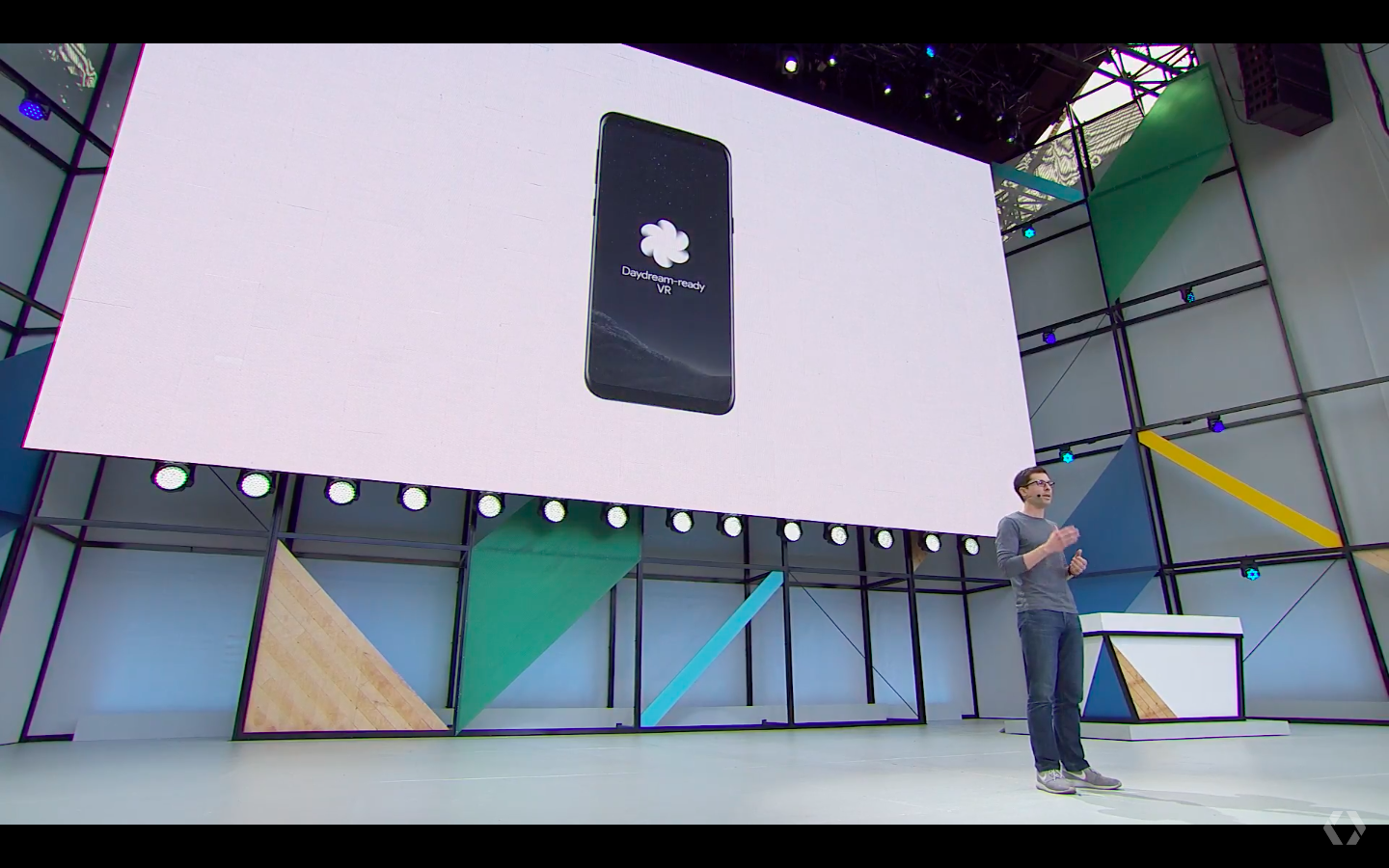
11:38AM: Android Go and YoTube Go is Google's ways of saving your data, which is great for all users. It's especially important for Google's spread into the developing world. It's not much for the Western world, including the US and UK, but the wider the Android audience gets, the better for the end-user.

11:33AM: The Android O beta will be made available starting today. That's great news for non-developers who wants to check out these features before the end of the summer, when we expect the Android O name and release date to come into full view.

11:31AM: Google is officially supporting a brand new programming language: Kotlin. it's fully Android runtime compatible and compatible with developers' existing code.
A new language is a great way to move beyond C language and take on Apple's new-ish language, Swift.

11:28AM: Google's Android O update is getting a big security push, dubbed Google Play Protect. But the biggest problem are sideloaded apps, so we'll see how this does for the most vulnerable Android users.
OS Optimizations is the next feature. Boot time will be twice as fast on the Google Pixel. Remember when the Google Nexus 6 took a minute and a half just to boot up from an off-state. A lot can change in three years.


11:24AM: Autofill with Google is expanding to apps. If you're trying to log into an app like Twitter, for example, and because you've logged into Twitter on the web with Google Chrome, you can easily log into the app now. This will make setting up new phones or other device a snap. Phone reviews everywhere (who setup new phones on a weekly basis) are cheering.
Here's another feature Smart Text Selection. You'll be able to select text like an address more easily – getting more of what you want and none of the text you don't.
11:23AM: Notification Dots will be the second big Android O feature. Like iOS and Samsung phones, you'll see notification bubbles on top of app icons. Why this wasn't done before was perplexing, but it'll finally be here this summer.

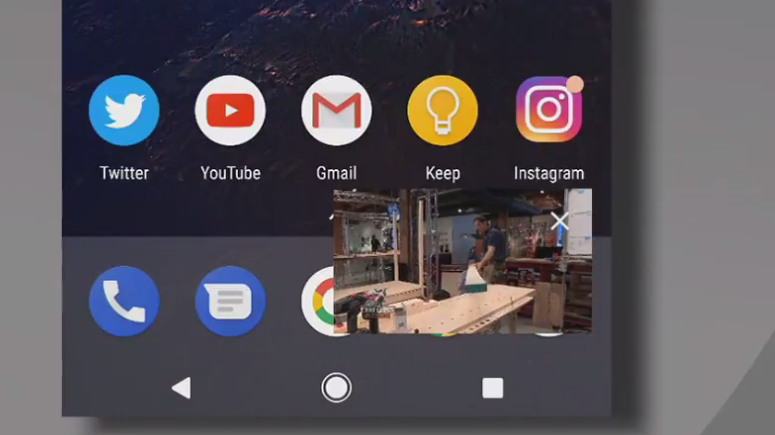
11:22AM: Picture-in-picture is the first big Android O feature announced today. All you have to do is press the home button while watching a video, and you can multitask while still watching that window in a corner (any you chose). It'll remain there until you swipe the video away.

11:20AM: Android O is coming "later this some," according to Google, and we're in for more fluid experiences and better battery life.
11:18AM: Okay. big news incoming after the slow YouTube news. Android's Dave Burke just took the stage to make some Android O announcements.
11:13AM: How are Super Chats using AI? You can perform actions, like turning on and off lights or dumping a bunch of water on your favorite creator. Google demoed it with the YouTube team Slow Mo Guys, pelting them with water 500 balloons, raising $500 for charity.
11:11AM: Super Chats are being demoed. It's a previously announced feature that that lets you pay money to have your comment pinned to the fast-moving live chats on YouTube live streams. These pinned messages are a great way to get your messages seen and help creators earn money.

11:08AM: 360 videos are coming to the big screen. This will help you appreciate the ability to look around videos from every single angle on a large television. Previously, this was only available on smaller devices like, phones, tablets and computers. Now it's coming to the living room and you'll even be able to look around using a remote.

11:02AM: YouTube CEO Susan Wojcicki just took the Google IO keynote stage, her first time on behalf of YouTube. It'll be interest if you announces new features or helps solve some of the problems YouTubers have experienced with openness and stopping the spread of controversial videos. It's a fine line.
10:59AM: So far, every Google IO keynote announcement seems connected, from Google Lens, to new Google Home features to Google Photos Shared Library and Photo Books.
What's liking them together? Machine learning and AI. It's really changing how we're interacting with our devices bit by bit. The long-term vision is clearly to free up your time spend on the devices and experience life more.
Next up, Google is shifting to YouTube announcements. Keep is locked to TechRadar's continuing liveblog for more Google IO keynote news announcements.

10:56AM: Google Photo Book is bringing your digital photos to life – at least in the form of hard copies. With machine learning, you can configure a photo book without the need to select the photos yourself. Luckily, you'll be able to make tweaks as you see fit. But the big legwork is all done for you.
Photo Books is coming to the US first, and it'll cost $9.99.

10:54AM: Google says that it'll launch Suggested Sharing and Shared Library on Android, iOS and the web in the coming weeks. It's meant to be less about you worrying about sharing memories, and more about experiencing them.

10:51AM: Shared Library is a new feature that will automatically send your photos to a loved one. That's the ideal way to send photos to the spouse, for example, and it's automatically saved to their library.
But if you don't want to drown in a loved one's photos, Google says it'll select the most relevant photos using machine learning and send them off. Again, this is something coming to Android and iOS, so no matter the platform, you'll have your photos.

10:49AM: Google Photos Suggested Sharing will even send an SMS and/or email to recipients with full resolution photos. There'll also be a way to ask these people to contribute their own photos?
Will this be a game changer to fork over photos you never get around to sending to friends and family? Facebook has tried with before, but Google appears to be taking the idea up a notch with machine learning.

10:48AM: Google just called you "a great photographer, but a terrible person." Google Photos is going to help you upload those long, lost photos with a new feature called suggested sharing.
It'll not only remind you about share suggestions, but suggest people via the new Suggested Sharing feature.

10:46AM: The secret ingredient behind Google Photos is said to be curation for its 500M users and 1.2 million photos and videos uploaded everyday.
10:43AM: The fourth and final feature is visual responses, right on your TV. It's kind of like the last feature that's all about entertainment, but putting responses and results on your television screen. "Everything can be done in a hands-free way right from the comfort of my couch."

10:40AM: Third feature –your favorite entertainment – involves Google Chromecast. You'll be able to ask your Google Home to play HBO, Spotify free and other streaming platforms to play through your Chromecast. It's almost as if your cheap streaming adapter just got voice commands.
10:37AM: The second new feature for Google Home is hands-free calling, and it'll be free to make these calls in the US and Canada. Chandra made a belated mother's day call to his mom.
What's great is that he says that Google Home called his mom, but if his wife had asked to "call mom," it'd call her mom. So important.
He just called it, "the ultimate hands-free speakerphone."

10:36AM: Four new features are coming to Google Home. Proactive Assistance is coming to the speaker, with simple, but important messages about upcoming events. It'll warn you of flight time changes and upcoming appoints, for example.

10:35AM: Google Home is now the focus on the stage, and Google's Rishi Chandra says it's expanding beyond the US and UK with new countries able to order the company's smart speaker: Canada, Austraulia, France Germany and Japan.

10:33AM: Actions on Google is the bot-run Google Assistant platform that's expanding today with payments. So in addition to ordering from a restaurant, you'll be able to pay with your Google account when you check out.
Your phone will talk to you just like you were talking to someone at the store. You're in control with what you share at every step of the way, promises to Google.
10:30AM: Google Assistant on the iPhone is huge news because not only is Google competing with Apple, it's also learning from Apple's vast audience. That means its machine learning capabilities will get even better. That's an advantage that Apple won't have, as we don't expect to see Siri on Android any time soon.

10:29AM: Google Assistant is coming to the iPhone, right before Apple is supposed to announce a big update to Siri. Ouch! So in addition to Android devices, TVs, wearables and car systems, Google is coming to the iPhone.

10:26AM: Google Lens and Google Assistant are combining here, so you'll be able to learn about what you're seeing without having to ask about it with your voice.
The best example is visual translation. Tap the Google Lens icon, point the camera at an item on a Japanese menu (when you don't know the language) and ask Google Assistant "What does it look like?" and it'll give you photos. You don't need to input menu items you don't know about just to know what you're ordering before it comes out.
10:25AM: Huffman is talking about Google is cracking the hard machine learning challenge: how you can speak to AI bots with natural language and still get relevant responses. That's a giant hurdle.
10:24AM: : Google is showing a video montage of Google Assistant, with a big focus on the smart home. Scott Huffman is taking the stage, and we're expect big news one year after the company revealed Google Home and Assistant for the first time. What's next? We're about to find out. There's a lot to prove with Amazon Echo Show with Alexa and the the rumors Siri Speaker coming soon.
10:22AM: Google is pushing computers and machine learning so far is that you'll be able to use AutoDraw to have computers draw for you. It's now about being lazy, but teaching computers to do incredible things that haven't been possible before. Sundar joked that even he can successfully draw with AutoDraw.

10:18AM: Now the Google IO keynote is getting geeky, which is a good fit for the developer-filled audience. We're talking neuralnets building neuralnets with what Google calls AutoML. How will end users see benefits? Well, healthcare is the first big initiative of this machine learning benefit.
Machine learning can help detect the spread of cancer thanks to advanced Digital Pathology. "Pathologists can improve diagnosis." It'll also apply to basic sciences with DNA Sequencing.
10:14AM: Here are some uses for Google Lens, as demoed at the Google IO keynote. See restaurants in front of you? Well, Google knows where you are (because it knows everything about you via its knowledge graph) and will present reviews and information over top of the building.
Even better, crawling under your co-workers desk in order to get the SSID and password of a Wi-Fi router? Snap a photo and it'll actually parse out the information and connect you. There was definitely applause for that first-world problem.

10:12AM: Sundar is talking up the progress made in photos, with some light applause. The magic behind Google Photos is astounding. But it's just the beginning.
With that, Google Lens has been announced. It uses the camera to identify what you're seeing in real life. It's like Bixby, but maybe it'll actually be useful.
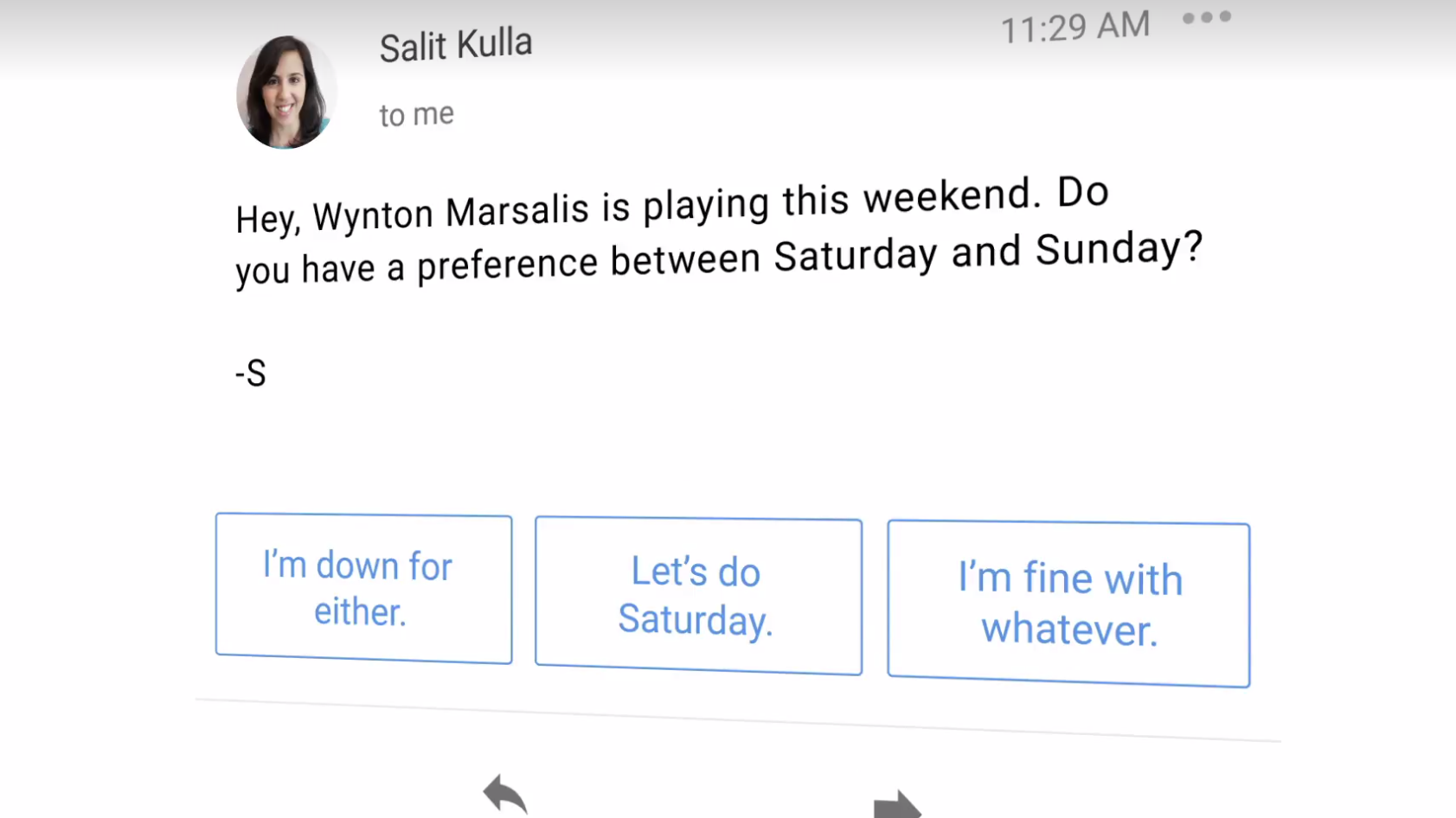
10:09AM: Smart reply is coming from Gmail. It's the handy feature you didn't use when you decided not to download (or at least actively use) Google Allo. Now you'll be able to use this quick reply feature to answer your emails.

10:08AM: "This week, we've crossed over 2 billion active users on Android," said Sundar. But... there's always a but, computing is evolving again.
10:06AM: Sundar has taken the stage and immediately talking big numbers, in the billions, between users and YouTube views. Google Drive will be the next to break billion user breakthrough at 800+ million. "The scale of these products are amazing," he said.
10:03AM: It's started. Right on time, we're now into the introduction video (a cute animated short) for the Google IO keynote, right before Google CEO Sundar Pichai takes the stage.

09:48AM: There's a lot of work that goes into bringing you news and updates of live events like the Google IO keynote. These are just two of the people behind the madness, Michelle (left) and me, Matt Swider (right). We're psyched to be in Mountain View on the Google campus to bring you the latest announcements. Just minutes to go now.

09:34AM: We're less than 30 minutes from Google CEO Sundar Pichai taking the Google IO keynote stage, and we're hearing some amped up tunes with 'Audio powered by Android.' The techno music vibe technology goes with all of the gadgetry here in the audience.
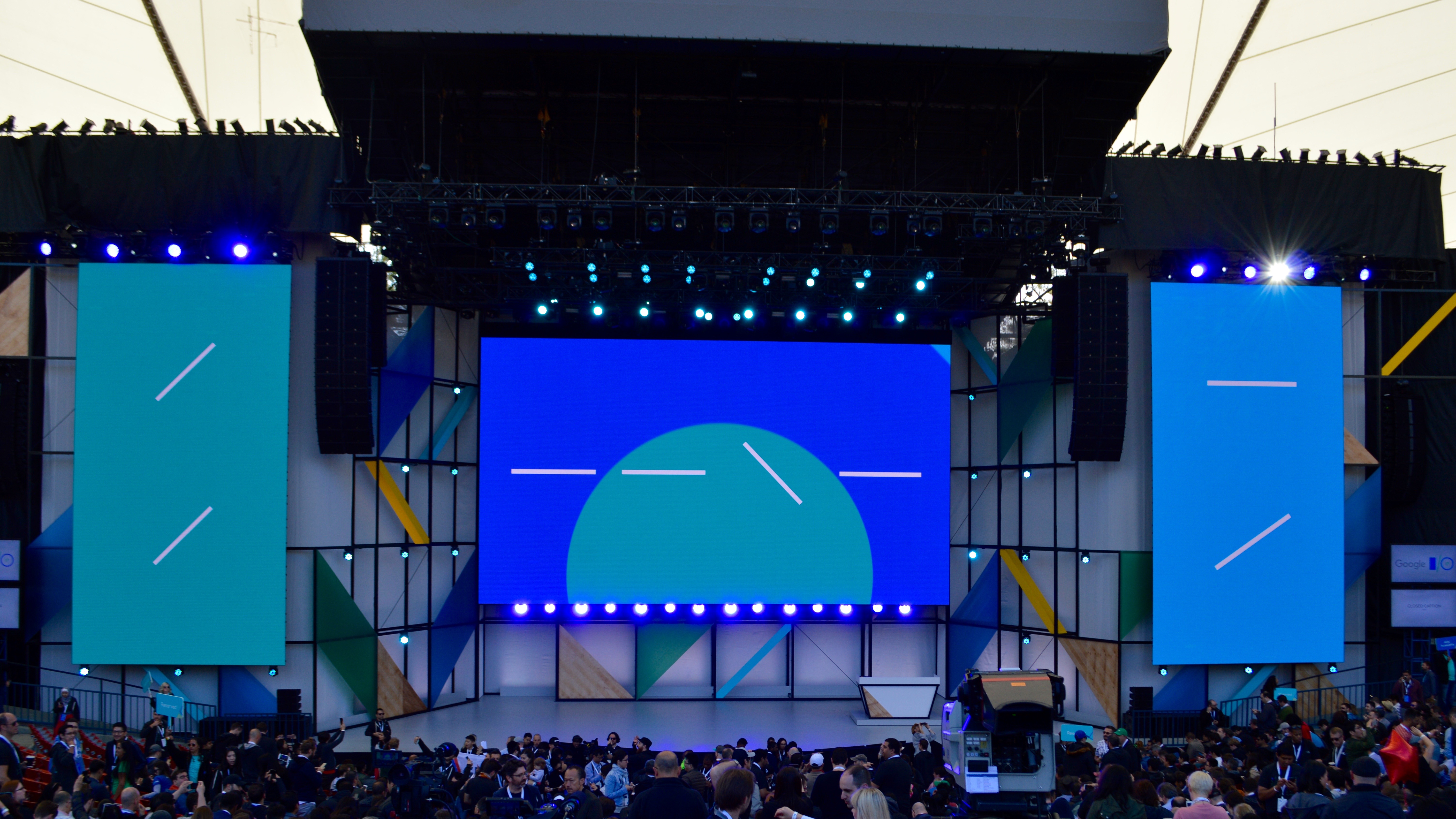
08:54AM: We're one hour from our Google IO liveblog minute-by-minute updates and already seated in the outdoor Amphitheater. What are we hearing besides pop music blaring over the speakers? Rumors about a standalone VR headset. It's been talked about by the non-media audience. News travels quickly. What does that mean for Google Daydream? Is it going to accelerate the growth of VR? We'll know very soon.

08:12AM: It's official. We're at Google IO 2017, and for all of the people who say "Picture or it didn't happen," we've got that now.
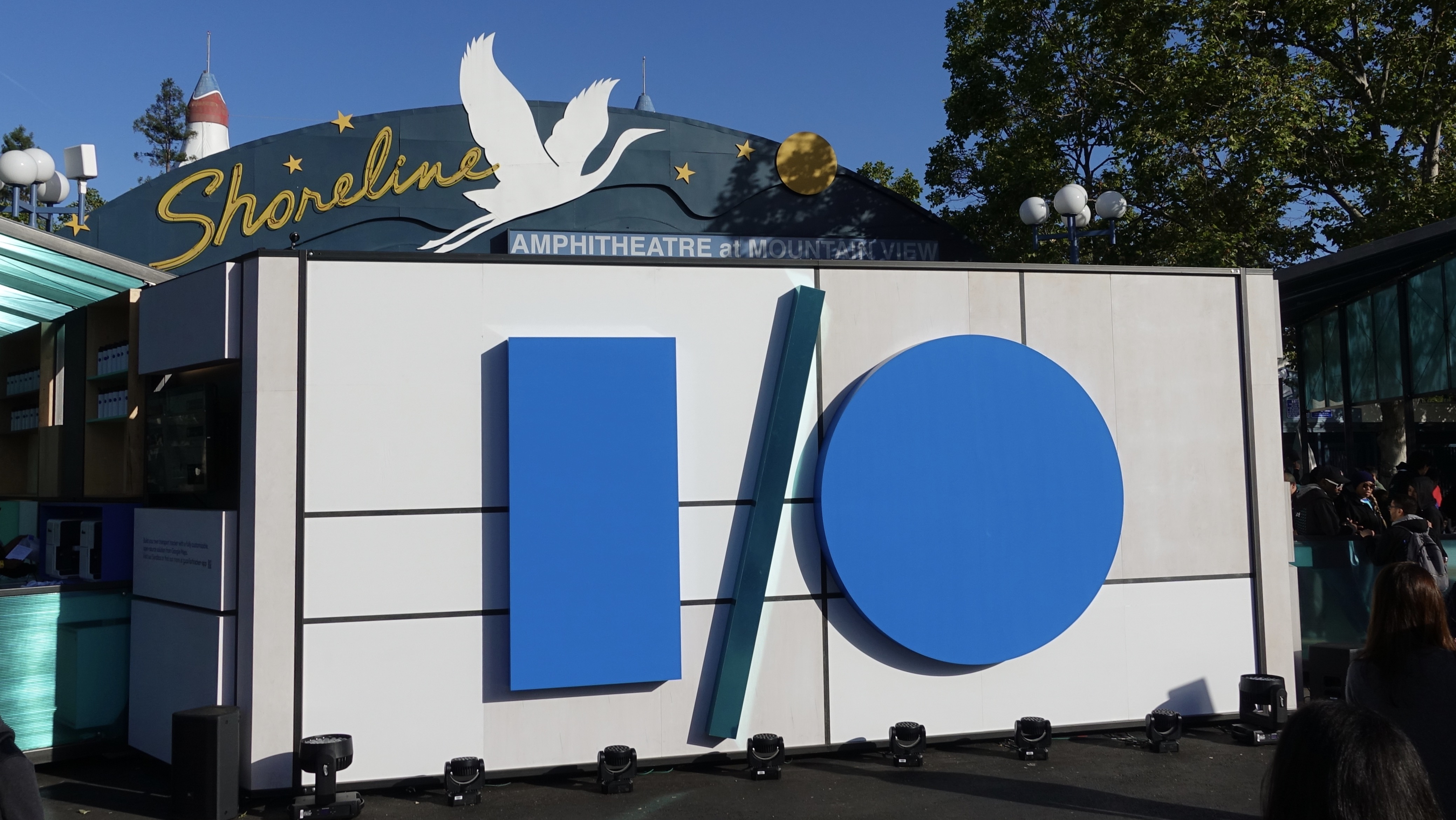
We're huddled with the world's press at Google's Shoreline Amphitheater waiting to go into the keynote. It'll begin at 10AM on the dot.

12:00AM: We're kicking off our Google IO liveblog this morning in Mountain View, California, and we're in the company of thousands of Android fans
They have a reason to be excited. Google's May 17 keynote begins in 10 hours, and it'll usher in the future of Android software and hardware.
Google has turned IO into a developer-focused outdoor festival that celebrates coding and innovation as an art. And the Android community plays the artist.
There's definitely a start-up vibe to Google IO, but you're still going to hear a lot of big impact announcements straight from the Alphabet company.
We'll be covering all of the news here in real-time over the next several hours. Here's some background while we sleep.
- Watch the Google IO livestream

Google IO liveblog start time
We're going to begin the Google IO 2017 liveblog around 7AM – and everything will be in Pacific Time. After all, we're in 'Google Country' right now.
The actual keynote begins at 10AM, with doors opening an hour in advance. That's usually how long it takes us to get Wi-Fi working properly – Google Wifi's mesh connection may help this year.
We'll provide minute-by-minute updates of what Google CEO Sundar Pichai says on stage and what your Android phone will look like (software-wise) in four months.

Google IO liveblog: what to expect
What's next for the Alphabet company? Over the next 12 to 24 months, your phone and speakers will get smarter, with Google rallying behind Assistant.
AI is driving all of the major players in tech, including Microsoft, Amazon, Apple and Facebook but Google's knowledge graph has so much data to work with.
Google Home is the company's budding AI speaker product, and we're likely to see how it'll answer the new Amazon Eco Show and its smart Alexa assistant.
Android O is a sure thing at Google IO. This is where Google likes to tease new features for its mobile operating system and the web.
Will we see Android Wear, Chromebook, car tech and lots of lots of VR tech. You can read more about from the link below.
